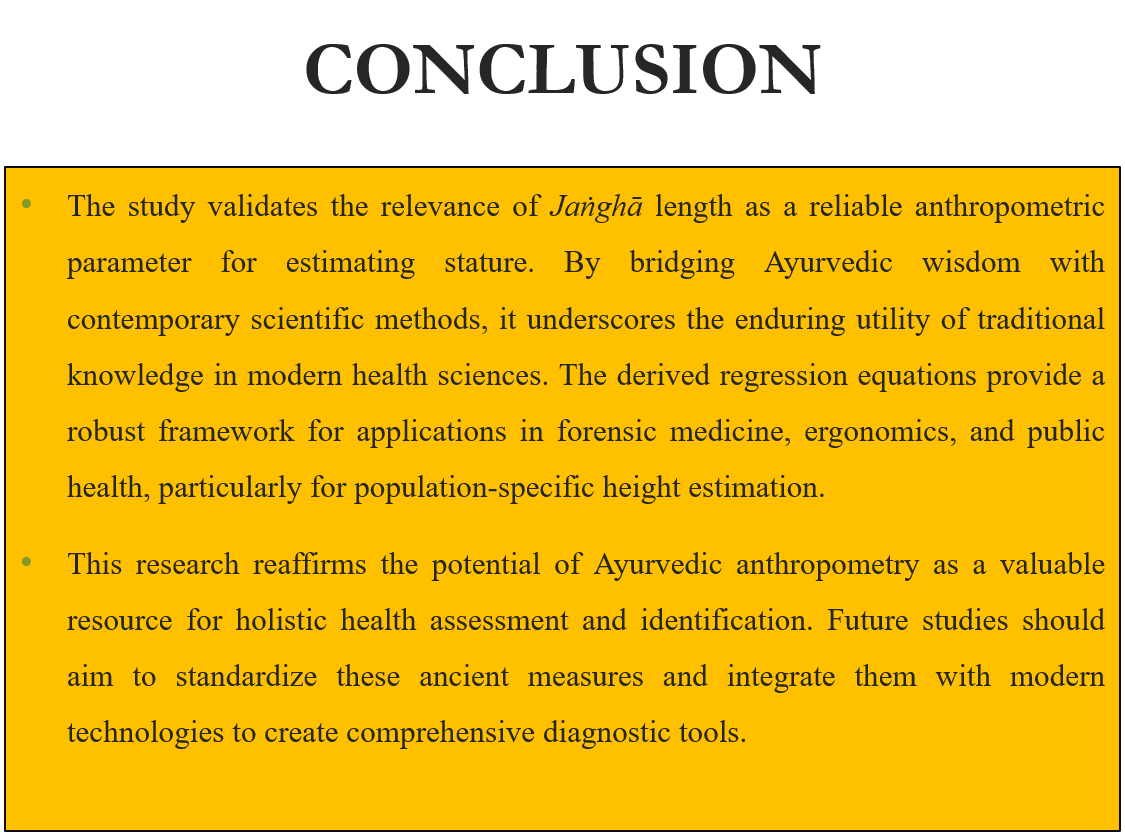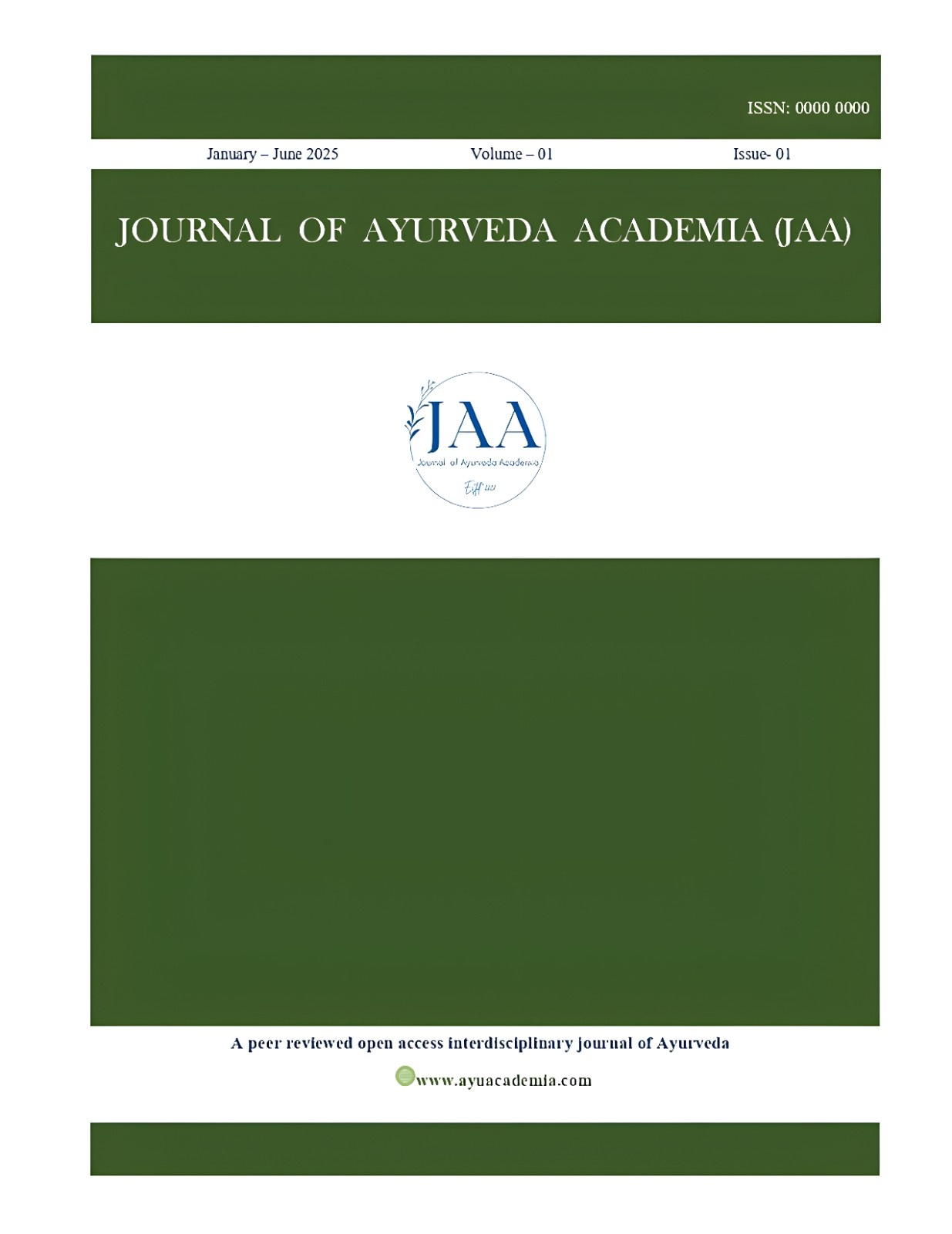Pramana Sharir Meets Contemporary Anthropometry: Correlation between Jangha Length and Height
ORIGIONAL RESEARCH (SURVEY STUDY)
DOI:
https://doi.org/10.64280/JAA.2025.V1I105Keywords:
Pramaṇa Sharir, Jangha length, Stature estimation, Ayurvedic anthropometry, Linear regression analysisAbstract
ABSTRACT
Background: Human stature estimation is a crucial component of anthropometry and forensic sciences, widely used in personal identification, ergonomics, and clinical evaluations. Ayurveda, a traditional holistic medical science, emphasizes body measurements under Pramāṇa Śārīra, focusing on individual constitution and symmetry. Objective: To integrate Ayurvedic concepts with modern scientific methods and investigate the correlation between tibial length (Jaṅghā) and total height in healthy individuals. Methods: A cross-sectional study was conducted on 100 healthy adults (50 males and 50 females) at a tertiary Ayurvedic institution in Uttar Pradesh, India. Tibial length was measured using standard anthropometric techniques, and total stature was recorded using a stadiometer. Statistical analyses, including linear regression, were performed to derive gender-specific predictive equations for stature estimation. Results: A significant positive correlation was observed between Jaṅghā length and stature, with correlation coefficients of 0.926 for males and 0.948 for females. Gender-specific regression equations were developed, showing minimal standard errors (±2.943 cm for males and ±1.974 cm for females). These results corroborate the reliability of tibial length as a predictor of stature and align with Ayurvedic principles of proportional body measurements.
Conclusion: This study successfully bridges Ayurvedic principles with modern anthropometry, offering a reliable framework for applications in forensic medicine, public health, and ergonomic design. Further research should aim to standardize Ayurvedic units like Aṅgula and consider diverse demographic factors to improve the applicability of these findings.







